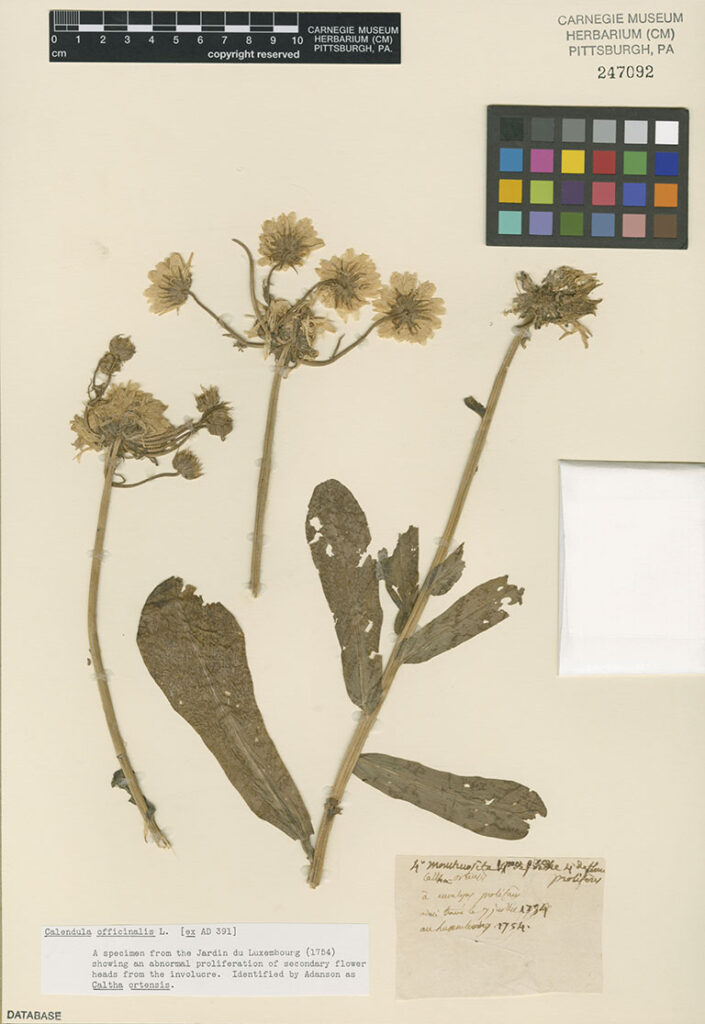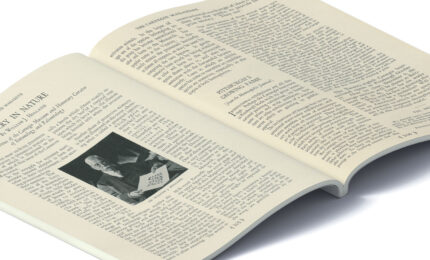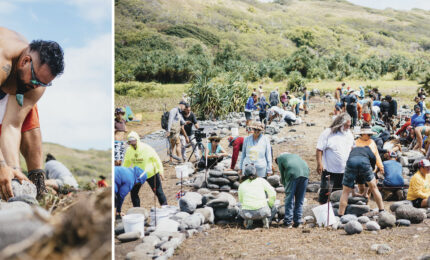
Michel Adanson was strolling through the Jardin du Luxembourg in Paris one day in 1754, still recovering from his 2,600-mile journey home from Senegal where he’d been researching West African flora and fauna, when he came across an unusual marigold. He plucked it for his collection.
The young French botanist characterized the Calendula officinalis as a “monstrosity” because of its “abnormal proliferation” of flowers. Now pressed flat and glued to paper backing, Adanson’s 270-year-old specimen is among the oldest in Carnegie Museum of Natural History’s herbarium.
Adanson, who lived to 79, published several important books on botany. He was an early proponent of the theory of evolution—a century before Charles Darwin—and designed an alternative taxonomic system to the one developed by his contemporary and scientific rival, Carl Linnaeus. In 1754, the ambitious 27-year-old Adanson was still three years away from publishing a book about his research in West Africa, Histoire naturelle du Sénégal, and had his entire career ahead of him. But he still took time to wander through Parisian gardens and pick flowers.
This early specimen was included in a box of Adanson’s “monstrosities” preserved by his estate. Those monstrosities found their way to Pittsburgh in 1961 when Carnegie Mellon University’s Hunt Institute for Botanical Documentation acquired them with Adanson’s manuscripts and correspondence. But the Hunt Institute is not an herbarium (a facility where dried plants are stored and organized, like a library). So, in 1984, the monstrosities were donated to the Museum of Natural History. Adanson’s specimens are kept safe in special cabinets and removed occasionally when associate curator of botany Mason Heberling or botany collection manager Bonnie Isaac want to study them. They are also digitized online.
“There’s a really interesting history and provenance of these Adanson specimens—how they got to Pittsburgh and what they have to tell us,” Heberling marvels.






